
The timing has never been better for women’s sports organizations to do incredible things. Beyond being a hashtag or the buzzword of the moment, there’s great potential in women’s sports. Potential to unleash the business prowess that women’s sports has always possessed but no one has ever really fully tapped into. And this is where supporter data comes in. Collecting supporter data, analysing it and using it to power all decision making within women’s sports is the answer to unleashing all this power. How? Keep reading this post as we discuss:

The case for using supporter data within women's sports

The benefits of using supporter data

How to get started using your supporter data today
Before we dive right in...
Subscribe to our blog today to ensure that you never miss valuable posts such as this one. We are passionate about helping sports organizations deliver a world-class fan experience, because better fan experience means better business. So why not use this opportunity to the fullest?

The case for using supporter data within women’s sports today
There is a huge appetite for women’s sports worldwide. From the Americas to Africa, Asia and Europe, it is unanimous. People want to see more women’s sports. Not only that, but fans want to engage with more women’s sports. Whether it’s through live TV, streaming, social media and in-stadium, fans can’t get enough. And why am I so convinced about this? You only have to look at the attendance records being broken and streaming records too to understand what I am talking about. And fan sentiment towards women’s sports has never been better.
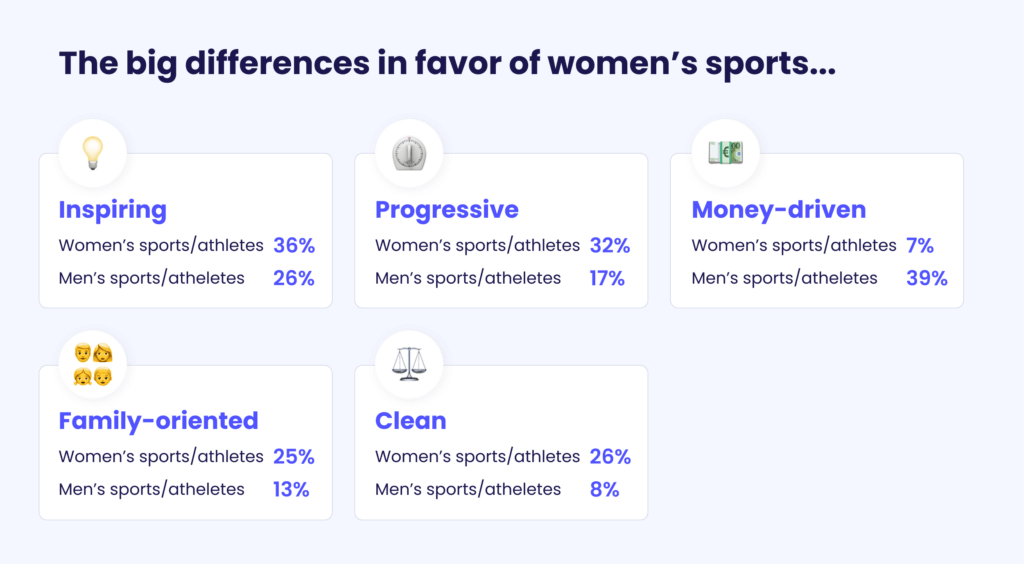
These beautiful sentiments do not just stop here though. Fans are going wild for women’s sports on social media too. For example, conversations surrounding women’s sports on Twitter grew by 64% percent.
Supporters simply cannot get enough of women’s sports. In fact, supporters are willing to give women’s clubs their personal data so that these clubs can communicate with them better – the very premise of our blog post.
Before we dive right into this, I want to give you a warning. See if you can identify yourself in any of the below scenarios.
Want to learn all about this and more?
Join our community >>
Where sports organizations get it wrong
This is the part where I vent a little so please bear with me, I am just very passionate.
It is not enough to just talk about all these incredible things. Women’s sports organizations need to actually see how perfect the timing is for them to really leave their mark on the industry. This mark can change the trajectory of not just women’s sports but the entire industry. Right now, the spotlight is on women’s sports. So the time to act is now.
There are several ways that women’s sports organizations get it wrong:
- Focusing only on soft metrics such as social media followers and not on harder metrics such as converting social media followers to contacts in their database
- Not working data-driven within a complete data ecosystem instead of using individual softwares that do not communicate with one another
- Not turning their mission and community driven approach to sports into a commercial success
Let’s look at these in more detail.
Focusing solely on soft metrics
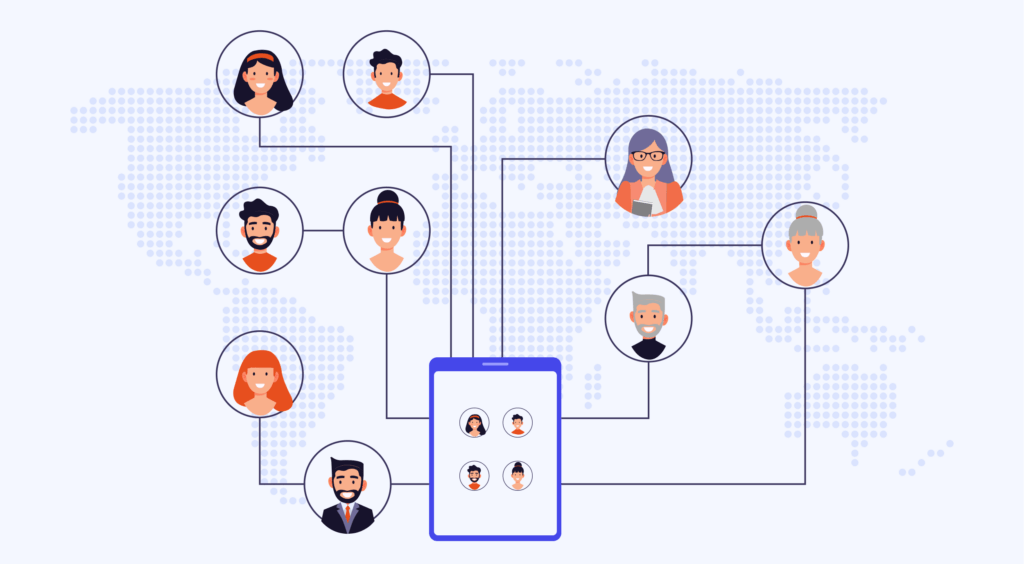
I mentioned social media, right? And how fans are supporting women’s teams there. “Every tweet, retweet, and hashtag posted on social media surrounding women’s sport is said to fuel future investments, though the commercial difference between men and women’s sports is still large” (Give me sports). I want to draw your attention to the latter part of this quote.
Women’s sports will never gain as much commercial success as men’s sports if they only focus on soft metrics such as social media followers. This is a common trap that all sports organizations fall into. Even men’s. For example, FC Barcelona at one point had 350 million social media followers but only 3 million of those were in their contact database.
So make sure that you are converting your social media followers to contacts in your database so that you can:
- get more supporter data
- reach your supporters
- communicate with them in a way that they can appreciate
- target them with all your marketing campaigns that they are eager to interact with
- use your contact database to negotiate higher sponsorship deals
Not working data-driven: an ecosystem (CDP) vs silos
Once again, this is not something exclusive to women’s clubs. Men’s clubs also fall into the same trap. Working data-driven is the key to success in the 21st century sports industry.
There is another layer to working data-driven. And that is building an ecosystem and not silos. When you have a data ecosystem, your softwares communicate with one another to give you a full picture of exactly what is going on within your organization. For example, within a data ecosystem, you know how many supporters are buying your tickets and merchandise, when, where, how, how often and how recently they have done so. All of this, in one software. However, when you have silos, you have all of this data in different sources with no way of getting an accurate and up-to-date overview. Which means:
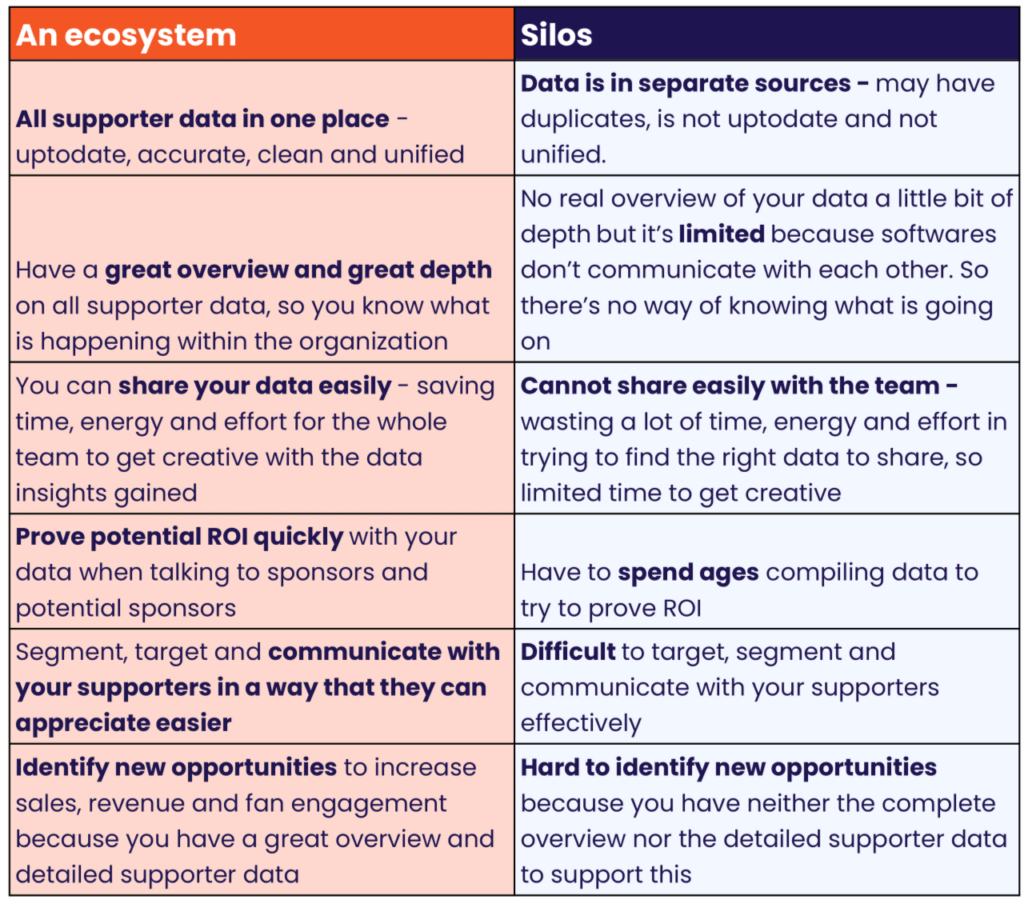
But what is this data ecosystem?
The Sports CDP is the only software that can provide you with this type of ecosystem in a:
- Straightforward and easy to use way that gives you great autonomy over what you do with your insights
- Complete way. That is, you can collect all your supporter data and then analyze it and finally act on it. All in one software – the Sports CDP.
- Long-term and sustainable manner, helping you power your decision making with high quality data now and also in the future
- Privacy regulation complaint manner
- Commercially focused manner. So you can finally increase your revenue, ticket and merchandise sales and boost your sponsorship value
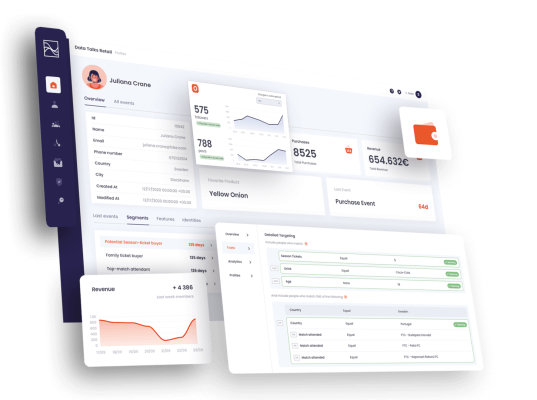
To see how this would look in action, explore the Data Talks CDP demo >>
Not turning their mission and community driven approach into a commercial success
Doing good, while doing good is possible. Meaning that, it is possible to have great commercial success while making an impact on society. You know how Iknow this? Once again, it’s the fans that make all of this possible.
Did you know that:
- 44% of women’s sports fans in the US are 24 years old and younger (Gen Z)
- This generation of fans, Gen Z, along with their older peers, the Millennials, are value-driven and care about social justice. That they care about supporting women’s sports.
- According to Conviva’s third annual TikTok Benchmarks & Strategy guide, the sports industry is now the fastest-growing segment on TikTok – which is one of the most important social media channels for Gen Z fans.
- Beyond Gen Z, according to Creative Brief: female sports fans are significantly more tech-savvy. Almost three quarters, 74%, like to keep up to date with the latest tech, compared with 44% of men’s sports fans.
- And fans of women’s sports are almost three times more likely to value innovation when choosing a brand, compared with men’s sports fans (according to Creative Brief)
- 70% of women’s sports fans believe technology is a driver of positive change compared with 46% of men’s sports fans (from same source)
If your fans want and expect you to be mission driven, and have the skills and willingess to engage with you when you use technology, why then would you not use this to your advantage? Especially when studies show that women’s sports fans are more willing to engage with sponsors of women’s sports organizations than men’s?
So, in a nutshell, don’t be afraid to turn your mission into a commercial success.

Why Sports Organizations need a CDP to grow and thrive

Women in sports: beyond the hashtag – time to make a difference
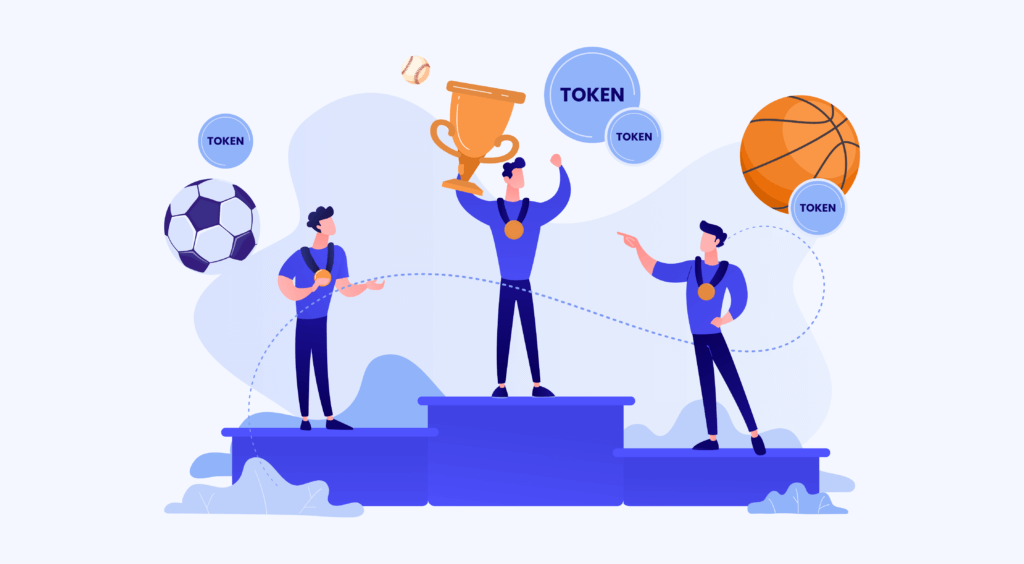
Everything You Need to Know About NFTs in Sports
The benefits you can reap from using supporter data
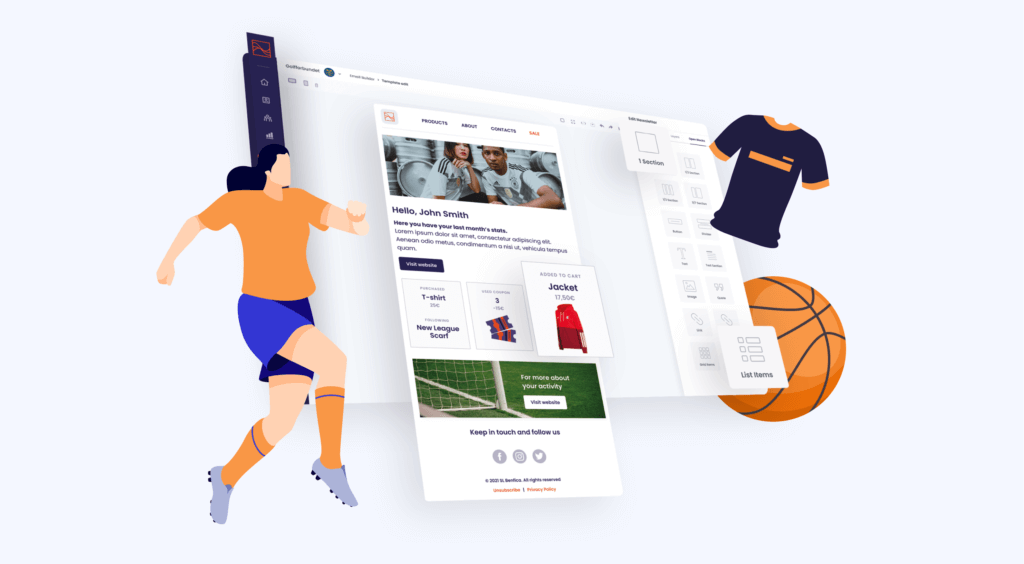
The benefits of using supporter data are many fold. But for the sake of our discussion, I will group them into three. Namely:

the benefits for the women's sports organization itself

the benefits for the industry

and the benefits that society as a whole will reap.
The benefits for the organization itself
Everything that we have discussed so far is proof of all the amazing benefits that women’s sports organizations can reap from using supporter data. But let’s spell them all out in a list, shall we?
The benefits of using supporter data for women’s sports include:
- Understanding your supporters better so that you can reach and communicate with them better. And give them what they want.
- Commercial success through aligning with your supporters needs, wants, interests and preferences
- Increased fan engagement (as supporters see that you are responding to their needs)
- Higher revenue through higher ticket and merchandise sales
- The ability to identify new revenue opportunities by understanding your supporters’ purchasing and web behaviour
- Proving a potential return-on-investment (ROI) to potential sponsors and current sponsors. This will give you better negotiating power
- Higher sponsorship value
- Long-term sustainable commercial growth
What this means for women’s sports organizations is having a robust strategy. It means having access to resources that will help them have fierce competitions that make fans want more. It also means finally having a firm foothold in the sports industry.
How the entire sports industry benefits too
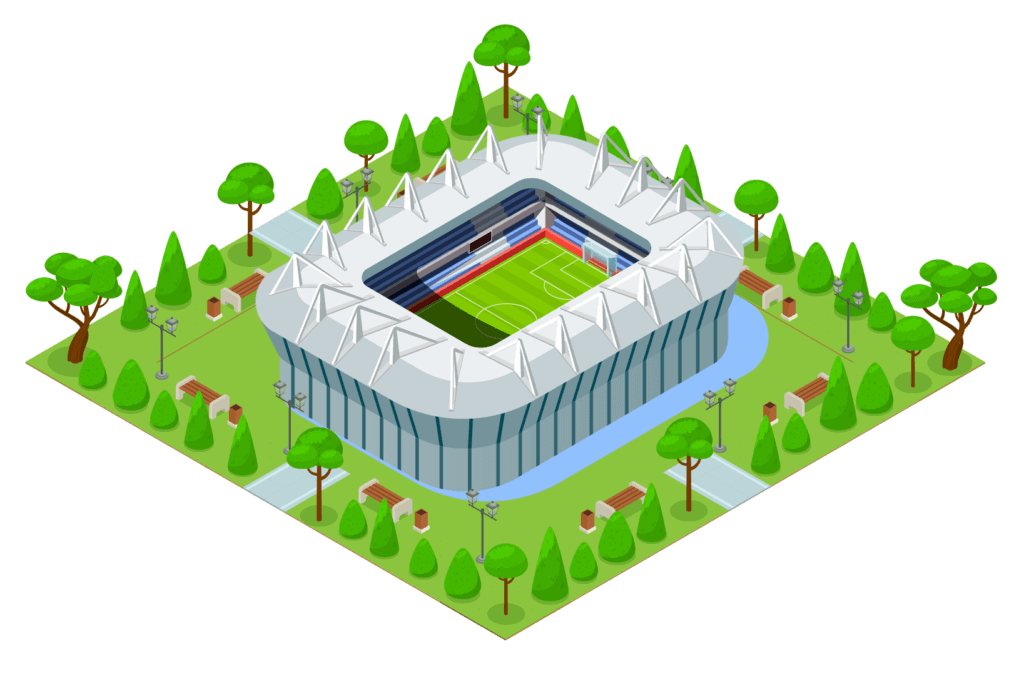
The sports industry is one of the most beautiful industries out there, right? That’s why we are all so passionate about it. However, the inequaility in sports is far from ideal. Not just inequality between women and men’s sport. There is also a great income gap between top clubs and lesser known clubs.
That’s why I call supporter data (especially when leveraged in a sports CDP) the great equalizer. Because supporter data is the key to bringing real shared value for both the supporter, the club and the sports industry at large. And since supporter data promises to increase the revenue of a sports organization when used right, it means that:
- We can bridge the income gap between women’s and men’s clubs. Making for a more equal industry.
- Higher revenue also means better access to resources such as training facilities and proper sports marketing, which will then create robust and compelling competition that supporters will be keen to engage with. This is essential especially because for the first time in history, sports clubs are really having to compete with other industries for the attention of viewers and supporters.
- Using supporter data gives women’s sports organizations higher negotiating power, especially when it comes to sponsorships. This, once again, bridges the gap between men’s and women’s sports. Particularly because studies show that only 0.4% of the total commercial investment in sports goes into women’s sports, despite a 2018 Nielsen report revealing that 84% of general sports fans have an interest in women’s sports.
I hope I have successfully conveyed to you that an increase in revenue is not all about being greedy and only trying to line your pockets. The commercial success of women’s sports will bring much needed equality into the sports industry as a whole.
The entire society will benefit too

Using supporter data has a positive ripple effect. At the micro level, both the club and the supporters benefit. And if we take it a step further, the entire sports industry benefits as well. Perhaps one of the most important reasons for using supporter data is the effects this will have on society.
When women’s sports gain commercial success, this disrupts the status quo. And we know very well that the income inequality within sports is not an anomaly. It follows the trends of most other industries. However, it is comforting and exciting to know that as we, here at Data Talks, are pushing for equality in sports, other people are pushing for the same in other industries.
In a nutshell, the commercial success of women’s sports will demonstrate to the whole of society obvious facts that somehow seem to be in question. Facts such as:

Women's sports are not charity. They are a fantastic part of the sports industry which also have the power to bring fans from all over the world together. While also doing well enough to warrant equal pay, investment, and fan engagement.

Women's sports are not inferior to men's. They are different but equally as exciting. And so they should not be judged by the same standards. Nor should the same strategies be used for women's sports that are used for mens.

A lot of women's clubs have been forced to innovate due to the inequality in sports. And with women's sports fans being so technologically savvy, women's sports can teach the whole industry a thing or two about how to cater to the younger demographic of sports fans such as Gen Z and millenials.
When sports fans, women’s sports, and the entire industry improve, a great impact is made on society.
The key takeaways
If I could sum up this whole blog post in one sentence it would be:
Supporter data is the building block needed to place women’s sports on a long-term and sustainable trajectory of success.
For example, using supporter data to it’s fullest capacity (which can only be attained with a sports CDP) can:

Increase revenue of women' sports organizations'. We are looking at higher sponsorship value and higher ticket and merchandise sales

Grow your contact database - so going beyond just social media followers to contacts in your database. You can then segment, target, and send these contacts (your supporters) communications that they can appreciate.

Help bring equality to both the sports industry and society at large. Commercial success for women's sports is a huge deal that will leave an impact for generations to come.
So then, what are you waiting for?
Take the first step towards seeing what using supporter data can do for your sports organization.
But if I were to condense the answers to these CDP questions to a few key takeaways, I would say:
